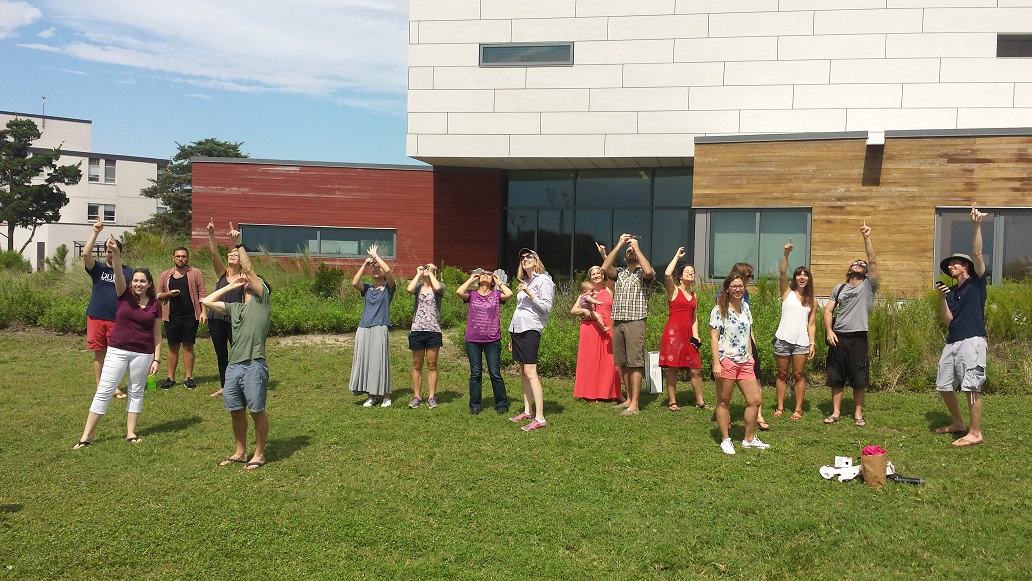Happy holidays from the Johnson Lab! Hope plankton brings you something good this year. (Plankton converts to coal in ~300 million years.)
Yearly Archives: 2017
Johnson announced a Sustaining Fellow of the Association for the Sciences of Limnology and Oceanography (ASLO). ASLO Sustaining Fellows are recognized as having sustained excellence in their contributions to ASLO and the aquatic sciences.
Microbial science at Duke is taking a major step forward with the launch of the Duke Microbiome Center (DMC), which is intended to address growing scientific interest in the roles microbial communities play in human health, the environment and biotechnology. The new center expands on the mission of the five-year-old […]
Marine aggregates play a critical role in the biological pump, both as a dominant component of carbon flux and as hotspots for organic matter remineralization by microbial communities. In this study, we used laboratory experiments to investigate how aggregate thin layers, such as those commonly found in the coastal ocean, […]
Prochlorococcus, the smallest and most abundant phytoplankter in the ocean, is highly sensitive to hydrogen peroxide (HOOH), and co-occurring heterotrophs such as Alteromonas facilitate the growth of Prochlorococcus by scavenging HOOH. Temperature is also a major influence on Prochlorococcus abundance and distribution in the ocean, and studies in other photosynthetic […]
Associate Professor Zackary Johnson presented on the trends and patterns of coastal and ocean acidification in coastal North Carolina at the Southeastern Ocean and Coastal Acidification Network NC Stakeholder meeting. The presentation was titled, ‘Variability of the carbonate system (including acidity) in a dynamic coastal NC system’. Ocean and coastal […]
Dr. Zhiying “Bruce” Lu joined the Johnson Lab as a postdoctoral research associate and funded by the China Research Council. Dr. Lu’s research focuses on using recycled medium (used water) for growing microalgae as a source of food and fuel. At the Johnson Lab he will work as part of […]
Five large scale ponds, three ~1000L and two ~4500L , have been installed and are growing microalgae as part of the Marine Algae Industrialization Consortium (MAGIC). The ponds will grow ~10 strains of microalgae to compare their growth characteristics, algae biochemical signatures, and product suitability across a range of potential […]
The North Pacific Ocean (between approximately 0°N and 50°N) contains the largest continuous ecosystem on Earth. This region plays a vital role in the cycling of globally important nutrients as well as carbon. Although the microbial communities in this region have been assessed, the dynamics of viruses (abundances and production […]









